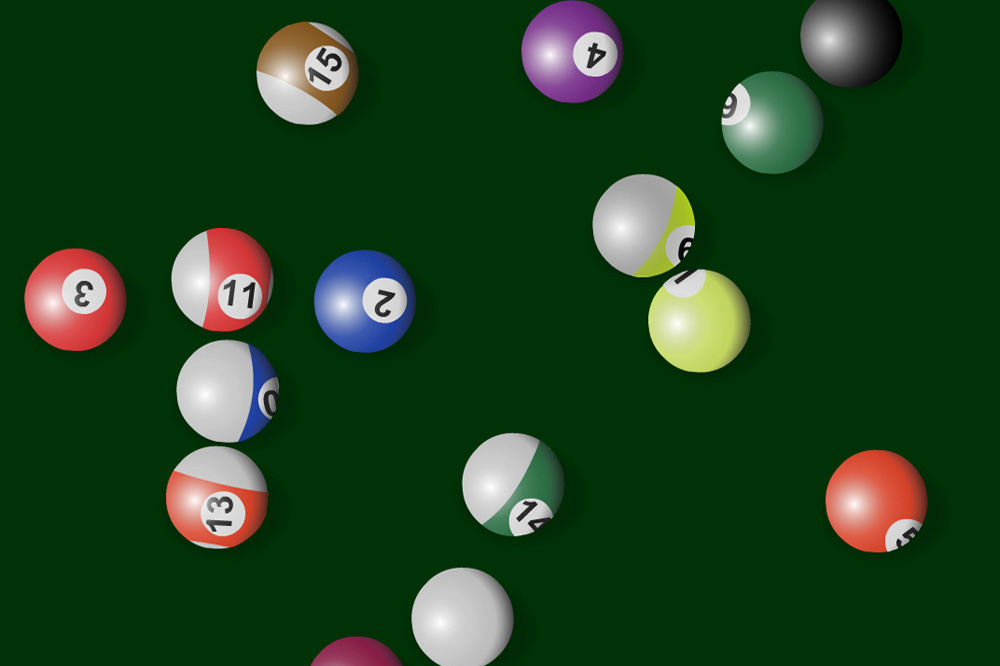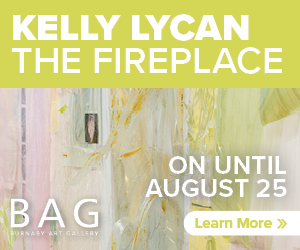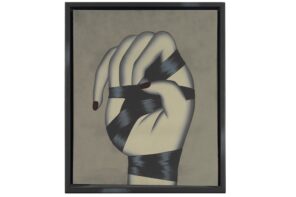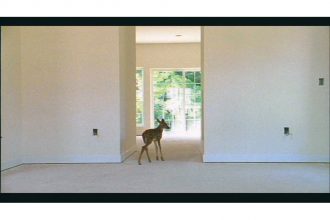The word “post-internet” is a useful, if maybe not quite necessary, evil. First attributed to the writing of artist Marisa Olson, the term has been alternatively employed with promotional gusto, dismissive scorn, analytic explication, and mystified questioning in contemporary art. Describing a new and already indispensable anthology edited by Karen Archey and Robin Peckham, Art F City’s Paddy Johnson conceded her exhaustion with the term in one headline: “Finally, a Semi-Definitive Definition of Post-Internet Art.” Arguably, what post-internet descriptively means has become less important than what it socially indicates: a network of artists, critics, curators, and other online interlocutors interested in the aesthetic and sociopolitical ramifications of the internet in a culture thoroughly saturated by it. (Though, if I were to hazard a definition, I’d stay humble and say the term designates a cultural attitude wherein the internet is its own object of investigation rather then merely a medium.)
One of the major voices, if not proponents, of “post-internet” art has been Brian Droitcour, a critic and curator living in New York. In an unambiguously titled blog post called “Why I Hate Post-Internet Art,” Droitcour fired shots against the movement-cum-sensibility for its infatuation with commercial imagery and flat-footed, apathetic acceptance of technology’s ever dynamic effects. Droitcour’s divisive essay became an article for Art in America, the publication also responsible for his equally important “Young Incorporated Artists,” which identified certain artists’ problematic cloning of corporate aesthetics. Yet Droitcour probably gained the most attention for his numerous reviews of galleries and museums on Yelp, a platform usually antipodal to incisive commentary. His recollections of writing on Yelp became “Vernacular Criticism,” an article for The New Inquiry that necessitated a nuanced, politically even-handed approach toward the numerous perspectives and voices attending to contemporary art outside the artworld proper. With his writing not just on “post-internet art,” but “post-internet” criticism, Droitcour expanded the term’s often navel-gazing chatter into broader theories of community and culture.
Momus interviewed Droitcour on the core principles of his writing on the eve of a new announcement, that he’d be contributing an essay to the catalogue for the New Museum’s much-anticipated “Surround Audience” triennial and editing a book of poetry for the exhibition. I sought to expand on the ideas presented in his writing, touching on questions of image aggregation, critical expertise, perceptual attention, and even Jerry Saltz.
A primary pivot in your work seems to be how writers and artists engage corporate culture as it operates online. You’re generally supportive of criticism on Yelp, even though it’s commodified through a top-down system from which Yelp profits. Yet you’re critical of “post-internet” artists, which is a designation we’ll use for now, and how they mimic corporate branding.
I see it as a difference between wanting to emulate these structures and acting within them out of necessity. I don’t think it’s possible to live socially without somehow representing yourself to Yelp or Facebook. I definitely think with something like Yelp, like any of these systems, you’re forced to work within their defaults, but what’s really interesting about Yelp is the dissonance between the way people are on Yelp and the way Yelp presents their writing. Yelp offers five affects that you can choose from when you’re doing the review, between “eek!” or “wow!” But when the full text of the review is written it expands beyond those interjections and the number of stars – the tools of data management – into a narration of a contingent, unique experience. And for me this is the reverse of personal branding, where life gets shaved off to streamline a certain image of it.
There seems to be a structural equivalency between The Jogging, for example, and Yelp: they’re both user aggregations with open submission policies, even if the former is ostensibly self-aware. Is the aggregation model the primary artistic production mode for post-internet art?
The Jogging isn’t active now – either it’s over or on its second hiatus – but after its last incarnation appeared in the summer of 2012, there was a long period where all the images on it looked similar: a stock photo with something uncanny about it, a hard-edged mass-produced object put in contact with something edible or leaky. Eventually it loosened up and The Jogging began to feature a lot of reflexive posts that served as meta-commentary on The Jogging itself, or posts that mimicked right-wing conspiracy theorists or political cartoons. So in that sense users had more freedom. It wasn’t just all an aggregation of images in one style. But in both cases what The Jogging did as a collective mirrored Tumblr’s own activity as an aggregator, whether that meant amplifying a particular cool style or encouraging users to do whatever they want as long as it fits the limits of the system, and thinking of that seeming “anarchy” as a cool style in its own right. The Jogging aligned itself with the platform, rather than the user.
In this curatorial model, the actual creation of objects is secondary to their collecting. The point of aggregation is the mass of objects, not a focus on one.
Yeah, I’d say this is the kind of activity that Tumblr fosters.
I get the sense that a hybrid “prosumer artist” is emerging now. I understand the prosumer in the contemporary context as an online user whose consumption of a given platform or format is the production of content for that platform or format. For example, Tumblr relies to a large extent on user-generated material, like the way people modify GIFs and circulate them. Some artists have the same means of production, even they identify as “professionals.” To me, this leads to questions about the relationship between post-internet artists and an establishment artworld that began operation before the internet.
I think we’re coming up against an asymmetry of terms. What you’re calling a “prosumer artist” is what I call a net artist. And you’re using “post-internet” in the broad sense that it’s often used in, where any artist working with the internet falls under its rubric. I’ve tried to pare down a definition of post-internet based on the aesthetic and intellectual interests that commonly come together under the term in group shows and get propagated via Tumblr – references to stock photography, a consumer object, perhaps a liquid of some kind and a fern, arranged in a brightly lit, vibrant image.
I find it useful to understand net art and post-internet art as separate ways of making work, though of course there’s crossover and artists who use both. Net art – what you call prosumer art – is what is seen online, on a single-serving web site or an artist’s hand-coded blog or maybe integrated in a social media feed. Post-internet art can be seen in a gallery or online, but in the latter case the gallery is visible in the installation shot.
So post-internet art has to have an exhibition supplement?
Yeah, I think of it as an internet-oriented way of making art for a gallery.
One of the points that I really like in your article “The Perils of Post-Internet Art” is that you say post-internet art involves objects that are meant to look good on the internet. There’s a reciprocation where something is made offline to look good online.
Some people don’t seem to understand the difference between artists who care about the way their work is photographed and artists who make work for the installation shot. That’s a huge difference. When artists work with a post-internet mindset, sculpture gets passed over on the way to documentation. In my criticism of post-internet art I’m kind of like the guy who writes a Yelp review about how the burgers at Burger King don’t look as good as they do in the commercials.
The stock image and the stock object become the formal and conceptual building blocks for post-internet art. But the threat of any art mimicking a commercial structure, like stock image repositories, is infinite regress. The advertisement and the artwork become indistinguishable.
Certainly art borrows from other visual languages – the languages of stock photography, advertising, Hollywood – but in good art those borrowed elements do things they’d never do in their native environment. With bad art that transformation doesn’t happen. It’s like when Pop Art becomes a vernacular consumer practice – Mickey Mouse’s face in a Warhol grid. It collapses into commercial marketing and consumer culture.
But the same problematic doubling happens with criticism when it serves as promotional material. The main economy of criticism now is basically advertising.
It’s become the norm for art writing to reproduce artists’ accounts of their own work. Artists are shocked when that doesn’t happen. The nature of language is such that no one can fully realize how others understand what they’re saying and art is like that, too. I think the critic should be a careful listener or viewer but that care can’t be totalizing and neither can a critic’s authority. I’ve found Yelp to be a useful model for thinking about the how the critic’s writing works in a field of differing perspectives. Look at any page on Yelp with more than five reviews and you’ll find a five-star review and a one-star review. If you’re trying to decide whether or not to patronize that establishment, you’re not going to take Yelp’s three-star average as authoritative – you’ll look at the positive and negative reviews and decide which voice sounds more like yours, which one speaks to your tastes. When a critic does nothing other than find out what artists say about their own work and report it back to the reader, I think that discredits the viewer’s experience, and the possibility for spontaneity and communication in the encounter with the work.
Yelp seems like a useful condensation of criticism’s dynamics.
I read Kant’s Critique of Judgment to try to get a handle on what happens on Yelp and how it relates to criticism in the traditional public sphere of newspapers and magazines, and I was really struck by the first sentence, where Kant says that aesthetic judgment originates in the subject’s feeling of pleasure and pain. Yet this embodied, subjective experience – this private judgment of taste – has to be moderated by a judgment of reason in order to be fit for public consumption. Kant was a philosopher of the bourgeois revolution, and he was interested in consensus, how universal values can be established in a liberal democracy. Aesthetics turned out to be the best field for modeling the idea of freedom that interested him. I’m interested in Yelp – and social media more broadly – as a ground for thinking about what happens when you put private judgments of taste in the public eye and let reason and consensus play a supporting role. What social or political forms can emerge from that reordering? But that’s very much an unfinished project.
That’s something I like about your writing: you’re generous toward people who do use social media. It’s very easy, and maybe at times necessary, to demonize these platforms and consumption patterns. In your article on MOOCs and MoMA’s online classes for Artforum.com, for example, there’s a very measured account of how these things could make communities.
I like to think of social media as a discursive space that’s distinct from the public sphere. While the organs of the public sphere have used it and tried to adapt to it, social media has a plurality of voices and perspectives that reveal the public sphere as a technology for propagating a singular perspective, one that values things like rationality and objectivity as foundations for the power of the bourgeois white man. Social media has opened up a lot of pushback to that. People talk about the death of newspapers and the death of experts, and I think that’s great. Of course I don’t ignore the reality that social media companies are enriching a small group of people in Silicon Valley, but I’m more interested in how social media is breaking down those other entrenched values. The master’s tools will never dismantle the master’s house, but often one master makes the tools for dismantling the house of another.
The cliché in contemporary art is that we’re now facing a crisis of criticism, but it’s actually a crisis of the critic. The idea of the expert is under fire, which can only be seen as an anxious problem if your position is defined through expertise.
I think social media has increased the visibility and potential for pluralism, but ideas about pluralism in art criticism go back several decades to the feminist criticism of people like Lucy Lippard and the Guerilla Girls. They identified the accounts of art and art history found in most institutions as representative of a singular perspective, and were interested in art criticism as a field where its authority could be challenged.
I’m trying to think about the question of attention as you touched on it in your review of Performa 13 for The New Inquiry. I know this rings a tad reactionary, but I can’t help but argue that contemporary art, especially net art, centers on a crisis of attention: it’s often sketchy, instant, distracting, consumable, quick.
That’s one way to see it. But as I wrote in the Performa review, it’s important to remember that there’s more than one kind of attention. A museum of painting and sculpture is oriented toward what psychologists call “direct executive attention,” a sustained, intense focus on a singular object. Certainly a lot of performance art relies on that kind of attention as well, but I was interested in writing about how some works were oriented instead toward diffuse or ambient forms of attention. That’s also the kind of attention that matters if you’re looking at the work of, say, someone who writes creatively on Twitter. You’re not going to spend three hours in quiet study and contemplation of a single tweet. Instead, you’ll read a couple of tweets every day for the rest of your life, or however long Twitter lasts. I’m less interested in measuring all art against a particular standard of attention than thinking about how art can lead to an appreciation of attention’s varied forms. I’m not saying we should burn all the paintings. I just think we should be open to the many ways that art can be experienced.
Jennifer Roberts, an art historian at Harvard, gave a lecture on pedagogy where she mentions that she asks all her students to look at a painting they’re studying for three hours. It’s hard not to read it as a sentimental “slow food” kind of thing, but this approach seems to have its merits.
She’s right that the longer you look at a painting the more you can learn about it. And in an academic setting that kind of study is valuable – probably more so than spending three hours reading art history books about the painting’s historical context. But I don’t think it’s realistic or productive to expect a museum visitor to spend an hour or even fifteen minutes focused on a single work – that’s not how leisure time is spent. What interests me about net art – and even post-internet art – is its orientation toward diffuse attention. It’s art that you come to know and appreciate by looking at it in fits and starts over long periods of time.
I thought about this in relation to Jerry Saltz’s protest about the plans for the new MoMA expansion designed by Diller Scofidio + Renfro. I haven’t looked at the designs so I won’t dispute Saltz’s negative evaluation of them, but I don’t accept the terms of his protest, which insist that any addition to the museum’s galleries should be suited to the contemplation of painting and sculpture. I’m not convinced that this is what museums need to prioritize in 2015.
It’s the “temple” model of the museum. Saltz is an interesting variation on the Yelp critic: he maintains a very active social media presence and maintains a populist approach to his criticism.
There was a time when I avoided reading Saltz but the more I thought about Yelp, the more I realized that I should pay attention to his writing. He’s a critic with a serious commitment to his own taste and expressing it in a very communicable way. And even if I don’t always agree with his taste, or like his voice, I think his way of being a critic is an important one.
















Good interview. The part about attention’s varied forms was particularly interesting, and makes me wonder if there have been studies as to amount of time needed for an “optimal impression” — meaning how long (seconds, minutes?) does it take for a truly deeper congnitive/emotional understanding of a work of art (and as our brains get rewired, will that speed up?) Can ambient/diffuse-attention art give us anything but a shallow/galvanic response?A good tweet could certainly do both (as do haikus or zen koans), but even then it requires focused thought, not ambient or diffuse attention, to get a fuller understanding. Is post-internet art akin to music > muzak, only tolerable when doing something else?
While I agree that a lot of performance art “is oriented toward what psychologists call “direct executive attention,” a sustained, intense focus on a singular object,” I disagree that painting is oriented that way. I think that’s a misreading of the medium. Paintings hang on the wall, don’t change if you look away, usually don’t make noise. Paintings are not the subject in the room, but the backdrop. A person in the room can choose to focus on the painting, but it is a presence in the room, nonetheless – thus, diffuse and ambient. I don’t have a developed opinion on sculpture’s role. Nice interview overall, thank you.
It seems that the distinction made here between different types of attention somewhat alludes to what Walter Benjamin calls ‘reception in distraction’ in his Artwork Essay (although it’s not exactly the same as is discussed here regarding twitter). The mention of architecture in the review linked certainly suggests that this allusion is intentional.